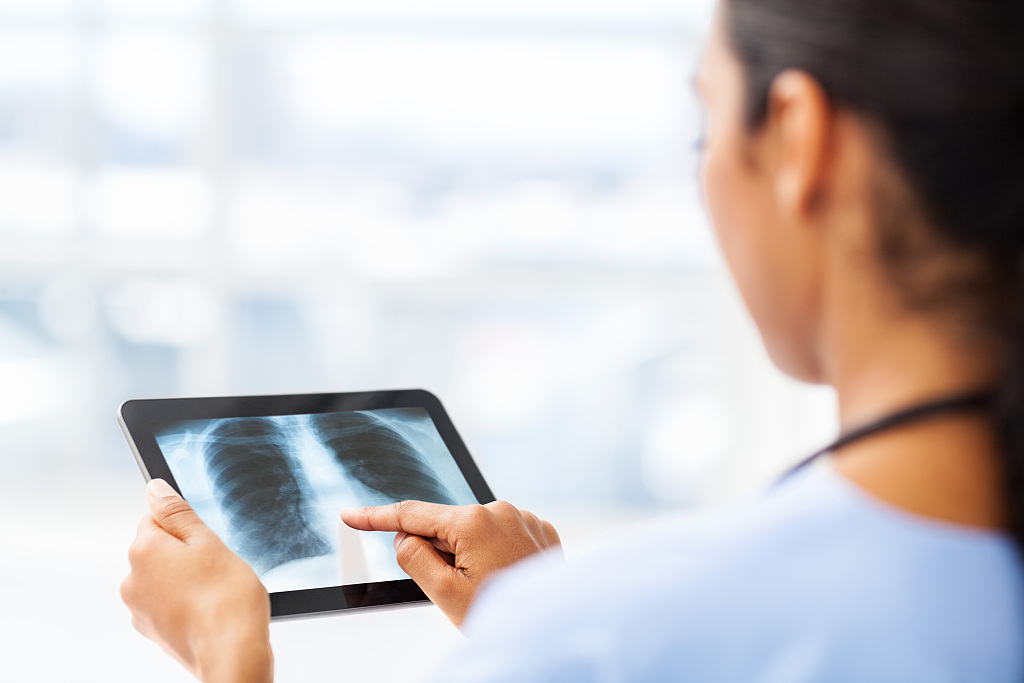What happens after a COVID-19 patient fully recovers and is discharged from hospital? Medical attention is now turning to the potential long-term effects of the novel coronavirus on the health of recovered patients and whether the respiratory disease would damage the lungs.
No complications for most as lungs have great repair capacity
"Clinical studies have shown that coronavirus infections mainly involve the lungs. Less severe cases of COVID-19 will recover without sequelae, but there may be repair of lung damage over a period of time for severe cases of COVID-19, such as those with pulmonary fibrosis," said Zhan Qingyuan, a doctor with the China-Japan Friendship Hospital, at a press conference held by the National Health Commission.
A sequela is a chronic condition resulting from a distressing episode, be it a disease, an injury or a trauma.
"More follow-up visits are needed for severe cases. I believe that the lung has a great repair capacity, and most of the pulmonary fibrosis can be repaired based on my own clinical experience," added Zhan.
He Bei, chief physician of the Department of Respiration at Peking University Third Hospital, said in an interview with Tencent Medpedia that autopsy reports of critically ill COVID-19 patients who succumbed to the disease have shown visible lung damage.
"However, according to the discharge criteria of the sixth edition of the diagnosis and treatment scheme, [a patient's] lung CT scan should show obvious absorption and improvement no matter their condition."
What is pulmonary fibrosis?
Pulmonary fibrosis is a textural anomaly or scar formation caused by abnormal tissue repair after normal alveoli – small air sacs in the lungs where gas is exchanged during respiration – are damaged.
Pulmonary fibrosis consists of inflammatory damage to lung tissue and destruction of its structure as well as cell proliferation and accumulation in a connective tissue in the lung known as the interstitium.
In the case of a minor damage, the normal structure and function of the lung tissues can be restored after repair without any impact on the patient's health. When serious or repeated damage occurs, the body's frequent attempts at healing the tissue will cause fibrosis or scarring.

What are the symptoms of patients with pulmonary fibrosis?
Specific symptoms of pulmonary fibrosis include difficulty breathing (dyspnea), chronic cough, expectoration or ejecting phlegm or mucus out of the mouth, panting, chest tightness, and other systemic symptoms such as weight loss, loss of appetite, peripheral muscle atrophy and dysfunction, depression and/or anxiety.
Pulmonary fibrosis is characterized by dyspnea or labored breathing. If mild pulmonary fibrosis develops, aggravating activities will lead to difficulty in breathing. As pulmonary fibrosis evolves, dyspnea will occur even when the patient is in a resting state. Patients with severe pulmonary fibrosis may experience progressive dyspnea.
Which COVID-19 patients require rehabilitation?
How to undergo rehabilitation and restore strength to the body and pulmonary function as soon as possible are crucial for COVID-19 patients after recovery.
If partial pulmonary fibrosis persists and the pulmonary function is not fully restored, dyspnea, increased exercise intolerance, limitation to motion and other symptoms are telltale signs that rehabilitation therapy is needed.
What can rehabilitation improve?
Rehabilitation can help the patient better breathe and improve their tolerance to physical activities, hence improving the quality of their life.
Rehabilitation therapy involves the following aspects:
1. Exercises to improve pulmonary function. The focus of pulmonary rehabilitation is to improve the pulmonary function, open the airways and improve pulmonary ventilation and pulmonary capacity.
Common exercises include pursed lip breathing which helps slow down a person's breathing and get more air into their lungs, and abdominal breathing.
Specific methods are as follows:
Pursed lip breathing: Breathe in through your nose, breathe out slowly and evenly through pursed lips. Breathe out twice as long as you breathe in. Practice pursed lip breathing for 10 minutes about three to four times a day.
Abdominal breathing: Lie on your back in a comfortable position with your hip joint and knees slightly bent. Place your hands on your abdomen and chest, practice pursed lip breathing. Your belly should expand as you inhale and retract as you exhale. Practice for about five to 10 minutes.
2. All-round exercise: This form of exercise is mainly to boost the full body endurance of the patient and improve the cardiopulmonary function. Aerobic exercises are recommended, such as jogging, tai chi and cycling.
3. Balanced diet: Patients should consume foods rich in protein, vitamins and trace elements.
4. Strict daily routine: Patients are advised to improve their home environment, pay attention to ventilation and avoid inducing harmful gases, smoke and dust. Patients should also quit smoking and create a smoke-free environment. It is necessary to be careful not to catch a cold.
Stories in this series were contributed by Tencent Medpedia's medical team, which were written and reviewed by medical experts from China's top hospitals. The series is intended for informational purposes only and is not a substitute for professional medical advice, diagnosis or treatment. Never ignore professional medical advice in seeking treatment because of something you have read on our website. If you think you may have a medical emergency, immediately call your doctor, or go to the hospital.